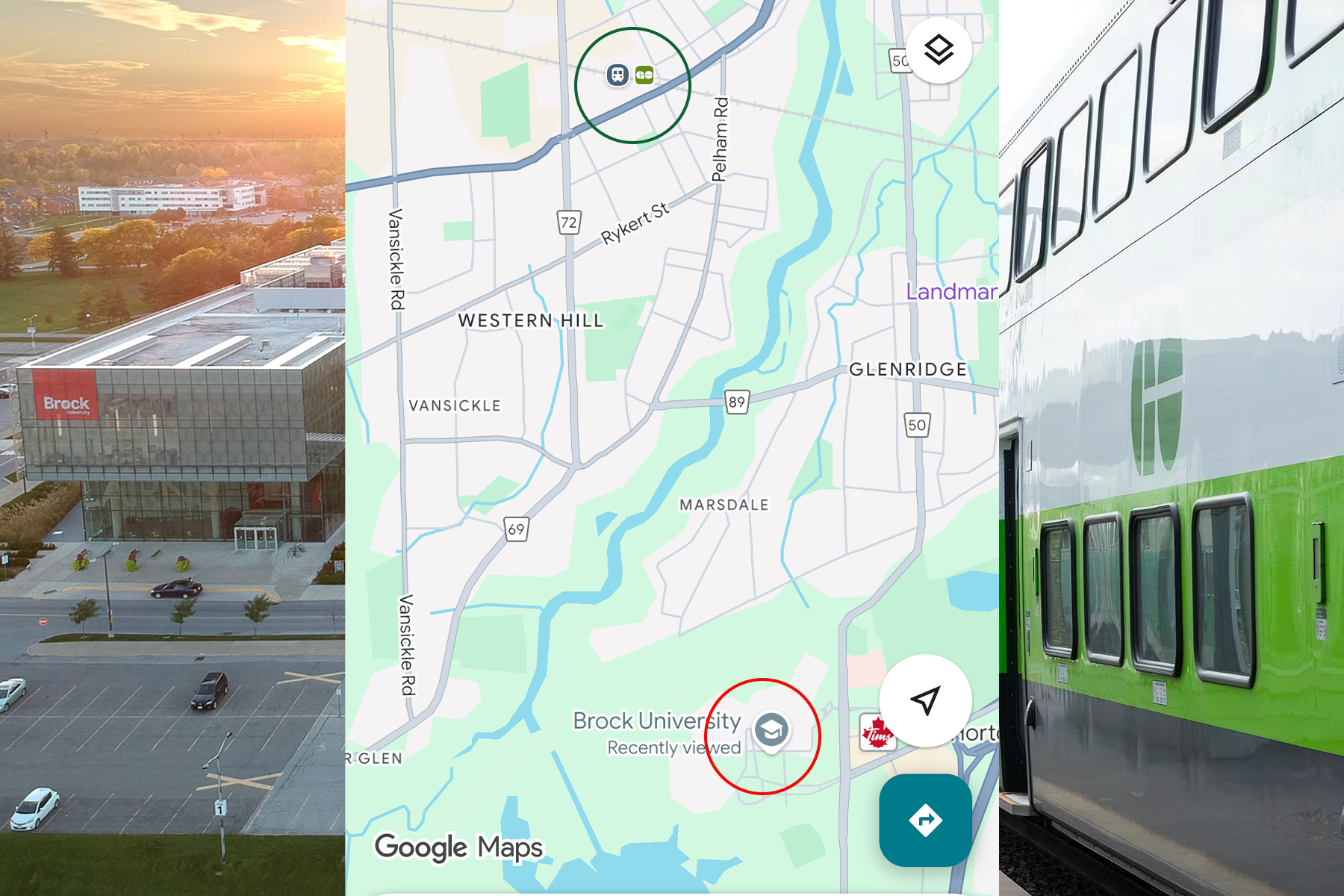A new versatile option for Brock students trying to get home to the GTHA has been under construction for the past year and is set to be completed August 2026. While under construction, the St. Catharines GO Transit station has been fully operational for travelers wishing to use the Lakeshore West line towards Niagara Falls or Toronto, with stops throughout the greater Toronto and Hamilton areas.
With three round trips on weekdays and five on the weekend, students may be interested in taking the GO Train when travelling. The train offers a more spacious ride for students and any luggage they may have, which could be helpful if you’re travelling during the fall reading week.
The train also makes more stops than standard coach bus routes, with stops in Hamilton (West Harbour, Aldershot), Burlington, Oakville and Mississauga (Port Credit). This makes it easier for students living in these communities to use transit when travelling home.
The train ride tends to be smoother and has benefits such as complimentary Wi-Fi onboard. With a student fare of only $10.19 on Presto for a trip from St. Catharines to Toronto Union Station, the train is a budget friendly option for Brock students.
The St. Catharines station is located at 5 Great Western St. and offers additional parking, a bus loop and new road access via Ridley Road,. For students living near the downtown bus terminal, the station is connected by Niagara Transit route 338/438. Due to construction, the buses will stop on Dexter St. and riders will have to walk a few minutes along Permila St. to access the station building. For travelers who want a more flexible schedule or live outside of downtown, the station is still accessible by car.
Station construction follows a greater effort by Metrolinx and the Government of Ontario to expand into the Niagara Region and increase connectivity in Southern Ontario. The city and region at large hope that the project will help to revitalize the area, specifically the St. Catharines downtown core.
Other options for students looking to use transit to travel into the GTHA also exist. Brock University’s main St. Catharines campus is serviced by Mega Bus, Flix Bus and the GO Bus.
Most routes on the two private coach lines (Mega Bus and Flix Bus) only offer one-way trips to Toronto’s Union Station, Pearson Airport and Mississauga’s Square One area, though some of these trips may only be offered from downtown St. Catharines.
The GO bus from Brock, route 11, tends to service more local stops, while the GO rain services several major suburban stops before reaching Toronto. Route 11 terminates at Aldershot GO.
__
For Brock students, this project may increase their travel options within the region, as well as increase overall foot traffic for many downtown businesses.

